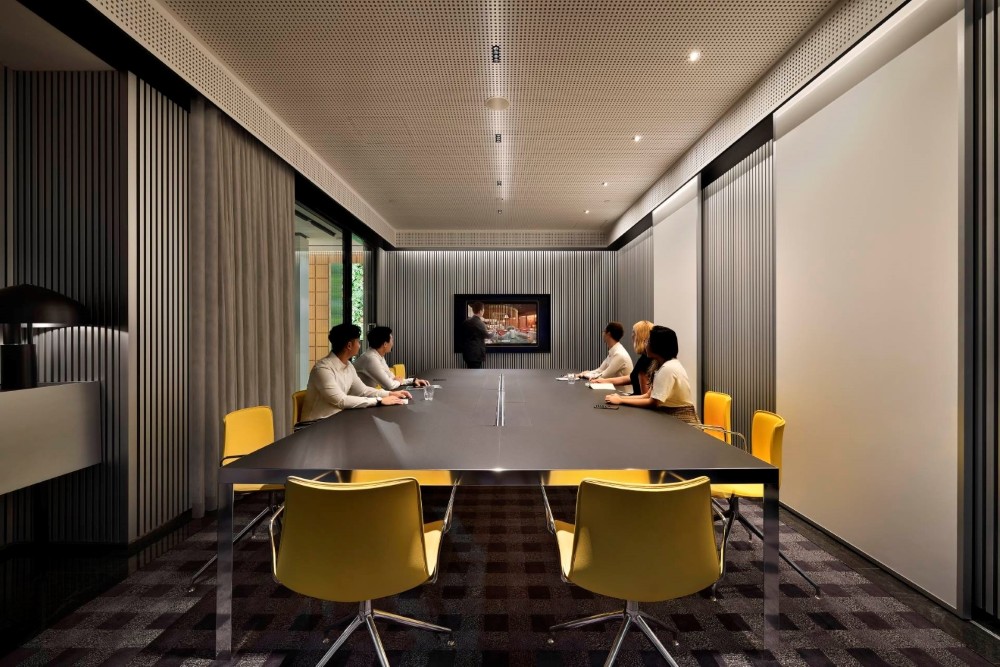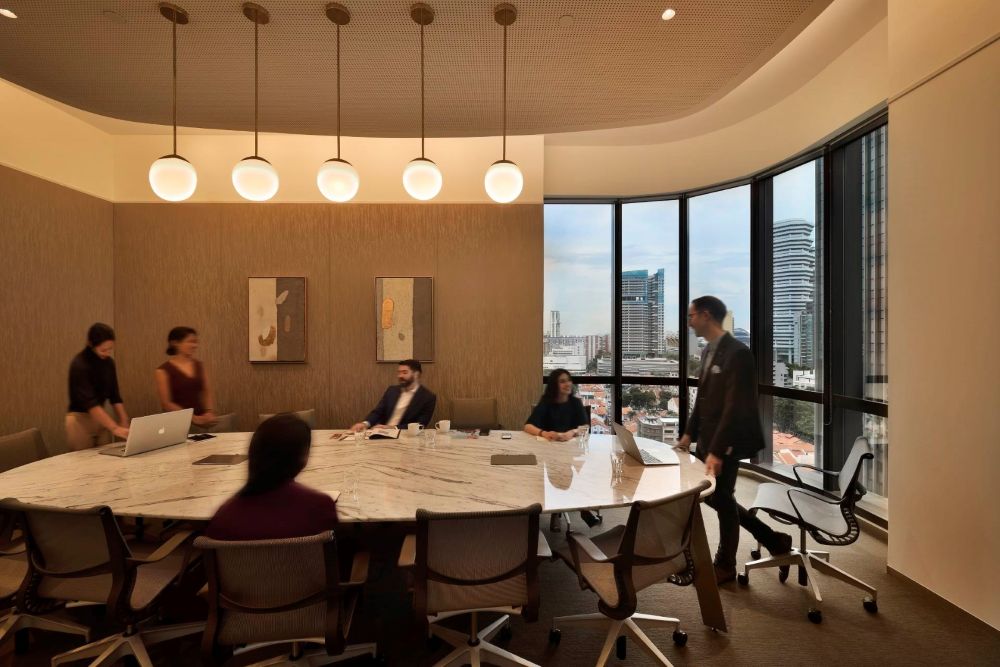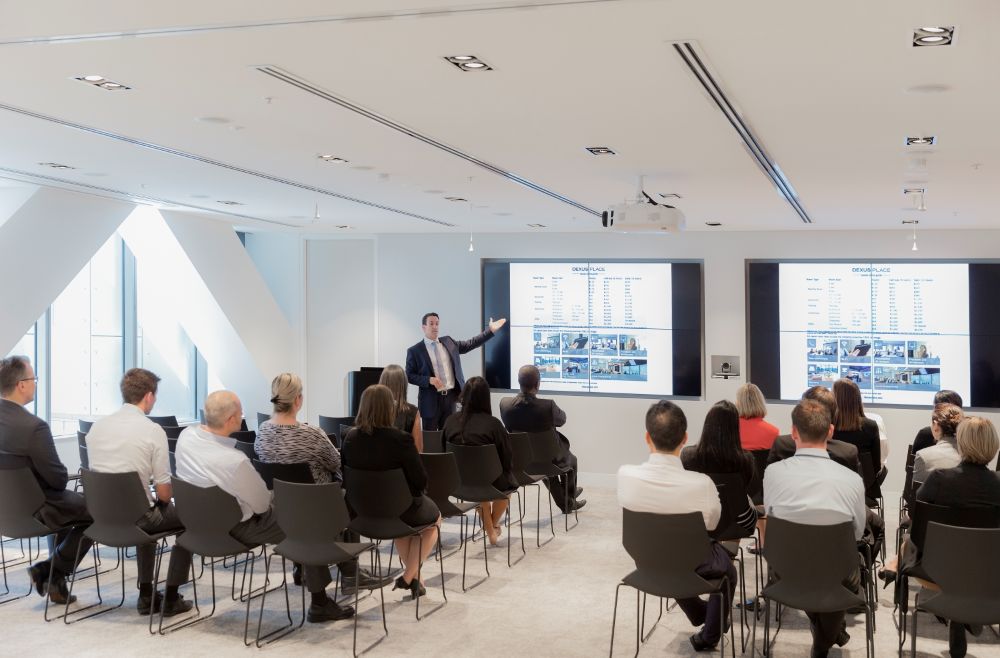The workplace in Singapore is in the midst of a rapid evolution. Modern businesses are adopting a successful hybrid model as a key strategic advantage. This isn't just about offering a different location to work from; it’s about rethinking how work is done to enhance productivity and meet the changing expectations of the modern workforce. Singapore's recently implemented Tripartite Guidelines on Flexible Work Arrangement Requests (TG-FWAR) in late 2024 have positioned the hybrid model as a necessity, not just a trend. The guidelines compel employers to fairly consider all requests, cementing a cultural shift that prioritises employee autonomy and well-being.
This blog will provide a comprehensive hybrid working guide for Singaporean employers, offering a playbook and strategic guidance to implement an effective hybrid workplace strategy that balances flexibility and productivity.
How Does Hybrid Work, Work?
A hybrid work model is a flexible work arrangement that blends both in-office and remote work. Employees in a hybrid model split their time between a central office and a remote location, such as their home, a cafe, or a coworking space. The core principle is providing a structured yet flexible approach to where employees perform their roles, contrasting sharply with the traditional, rigid 9-to-5 setup.
Hybrid models are not one-size-fits-all, and their implementation varies widely across companies in Singapore. Success hinges on a foundation of trust between managers and their teams, clear policies, and seamless communication.
What’s the Difference Between Hybrid and a Full Office?
A traditional, full-office model is defined as one where all employees are required to work from a central location every day. In this setup, the workplace itself is the primary hub for all professional activity, and physical presence is often equated with productivity and collaboration. It’s a model built on constant in-person interaction and a single physical location as the central point of contact.
A sharp contrast exists with hybrid work, which offers employees autonomy and flexibility to choose their work location for a portion of the time. This empowers employees to take control of their work-life balance, reduce commuting stress, and perform tasks in an environment where they feel most productive.
The hybrid model fundamentally redefines the purpose of the physical office. It shifts it from a place for individual heads-down work to a hub for collaboration, team building, and social connection.
The Strategic Advantages of a Hybrid Workplace
1. Attracting and Retaining Top Talent
Contrary to popular belief, salary is not the sole motivator for new hires in Singapore. Research shows that nearly one in two job seekers is actively looking for greater flexibility and remote work opportunities.
For employers who want to attract and retain top talent, being more flexible with attendance policies is becoming a necessity. A flexible work arrangement is a significant factor in employee retention, and it demonstrates a company’s commitment to employee well-being.
2. Increased Productivity and Performance
A common misconception is that hybrid work reduces productivity. On the contrary, it empowers employees to work in an environment where they are most productive. According to a Stanford study, remote workers are 13% more productive than their office-based counterparts, take fewer sick days, and experience quieter work settings.
A hybrid model, therefore, can increase job satisfaction and engagement, ultimately leading to better performance and more effective work..
3. Optimising Space and Resources
Office space rentals in Singapore continue to rise, and average availability is projected to take a 34% dip between 2025 and 2029. Keeping your physical office footprint to a reasonable minimum then becomes a cost-effective option. Funds that would have otherwise been reserved for a permanent lease and miscellaneous office logistics can be freed up for operational needs.
A hybrid model allows businesses to manage their resources more efficiently and invest in other areas. For a small or medium-sized enterprise just starting out, renting a workspace would provide these benefits with maximum flexibility.
Implementing Your Hybrid Workplace Strategy: A Step-by-Step Guide
For a successful implementation of a hybrid workplace strategy, a clear plan and strong guidance are essential. This playbook will walk you through the key steps.
1. Define Your Hybrid Model and Policy
Defining your company's hybrid model marks a crucial first step. Whether you opt for a fixed schedule with specific days in the office or a more flexible, trust-based approach is a fundamental decision. Creating a clear policy that outlines expectations, work schedules, and communication protocols is essential. A well-defined policy provides clarity for all employees and serves as a roadmap for success, ensuring everyone is aligned on the rules of engagement.
2. Invest in Technology and Tools
Robust technology to support remote work is absolutely essential. Investing in a solid digital infrastructure, including collaboration platforms, project management tools, and secure access to company data, is non-negotiable. Furthermore, investing in high-quality video conferencing equipment and other digital tools is critical. These tools can make virtual meetings as effective and engaging as in-person ones, bridging the gap between those in the office and those working remotely.
Technologies and tools to invest in to make hybrid workspaces more efficient:
- Video Conferencing Systems
- Cloud-based Collaboration Platforms
- Project Management Software
- Digital Communication Tools
- Virtual Whiteboards and Brainstorming Apps
- Remote IT Support Services
3. Redesign Your Physical Office
The office must be redesigned to serve as a hub for collaboration, connection, and social interaction. Creating a space that actively encourages these activities is a key part of a successful hybrid workplace strategy. A successful hybrid model will see employees using the office as a strategic destination, rather than a mandatory daily destination.
Office layout tips to promote productivity in hybrid workspaces:
- Collaborative Zones: Create open, flexible areas with movable furniture for team discussions.
- Quiet Zones: Designate spaces for focused, heads-down work.
- Social Hubs: Incorporate inviting areas like a kitchen or lounge for casual conversation.
- Video Conferencing Rooms: Equip rooms with high-quality AV to ensure seamless virtual communication.
For hybrid teams, private meeting rooms are crucial. These rooms provide a professional and confidential space to conduct focused in-person meetings, bridging the gap between remote and in-office colleagues.
The Hybrid Workplace is the Future

A well-executed hybrid workplace strategy is a long-term solution for businesses in Singapore. Summarising the key benefits and strategies discussed, it's clear that this model is a strategic move, offering significant advantages for both employers and employees.
Discover flexible workspace solutions and private meeting rooms for rent at The Work Project designed to support your hybrid workplace strategy. We provide a productive and adaptable environment for your teams.






